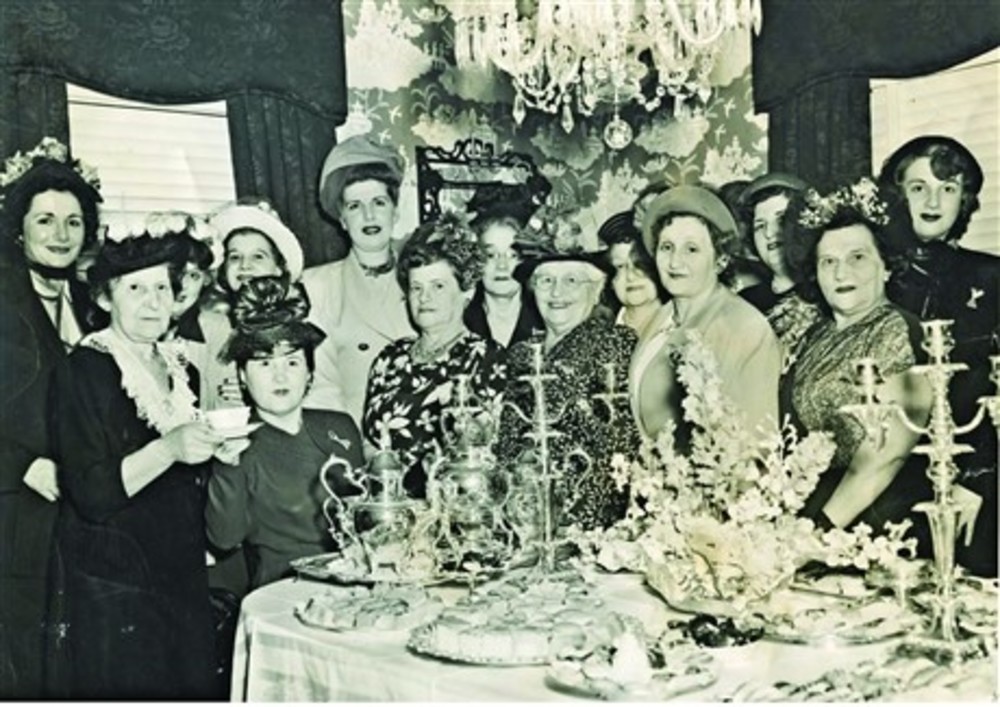The annual meeting endures
 Sisterhood annual meeting of Congregation Shavath Shalom (“The Howell Street Shul”) in Providence, circa 1940. /Photo from the Fred Kelman Collection housed at RIJHA.
Sisterhood annual meeting of Congregation Shavath Shalom (“The Howell Street Shul”) in Providence, circa 1940. /Photo from the Fred Kelman Collection housed at RIJHA.
We have come to the season of the annual meeting, the year-end ritual that reviews and assesses the well-being of an organization. On this occasion the praiseworthy are praised and thanked, officers installed and future progress envisioned. It is a pause for reflection, as well as a celebration of accomplishment and continuity.
This past April, I was present at the annual meeting of one of my favorite organizations, the Rhode Island Jewish Historical Association. With the photographs of the seven founders as a backdrop, the meeting began at the appointed hour. The secretary’s report was waived; other reports were remarkably brief. The board members – old and new – as well as the officers, were introduced, and with a word installed. The new president Ruth Breindel outlined plans, fresh directions she envisioned for RIJHA. The audience thoroughly enjoyed the presentation by Rabbi Josh Breindel, who gave the David Charak Adelman lecture. Rabbi Breindel arranged his talk to fit exactly into the allotted time slot. Perhaps an hour later we were helping ourselves to cookies and coffee. It was the essence of brevity and delightful.
Over the past six decades, I have attended or participated in more annual meetings than I care to count. The occasion attracts members and supporters who share a sense of obligation, social kinship and loyalty to the organization and the community that engendered it. Looking back on those years and the convocations of RIJHA and others, I am struck by changes time has wrought. Still, the central premise of the annual meeting has endured. Though dates may change from year to year, the event itself is a fixture on the calendar of most organizations.
Back in the day, 50 or 60 years ago, the formal agenda of the annual meeting followed a stylized pattern: opening remarks by the chairperson of the day; recognition of any present dignitaries or special guests who often had a few celebratory words to say; reports and reports until someone had the brilliant idea of compiling them in a booklet distributed at the occasion, a practice large agencies adopted.
Then came time for the installation of officers, when the installing officer reviewed the duties of the board members and then the officers, admonishing each in turn (after a review of their responsibilities) “to discharge their duties faithfully and well.” The incoming president accepted the responsibility, and the speaker and the program were introduced. A “collation” followed the call for an adjournment.
In keeping with the importance of the meeting, an unspoken dress code prevailed, whether the audience was strictly male, female or mixed. No casual clothing here. Men wore suits and ties. Women dressed in lovely frocks or well-tailored suits (no pants) and HATS. Hats were a must, a vital accessory for the well-dressed woman.
The collation table had its own formal etiquette. Flowers and trays of pastries graced the table. Unless no women were invited, ladies in lovely hats presided over the urns of hot beverages – tea at one, coffee at the other. Actually it was fun greeting your patrons and chatting a bit while you poured and added the cream or sugar requested.
Much has changed in six decades. But the annual meeting has endured. Though sometimes a bit tedious, it has endured for all the right reasons.
GERALDINE FOSTER is a past president of the Rhode Island Jewish Historical Association.







